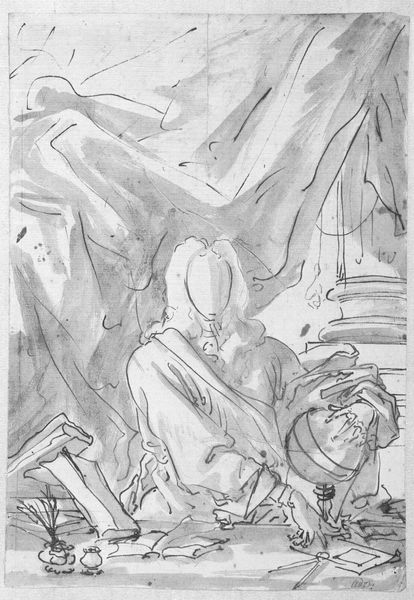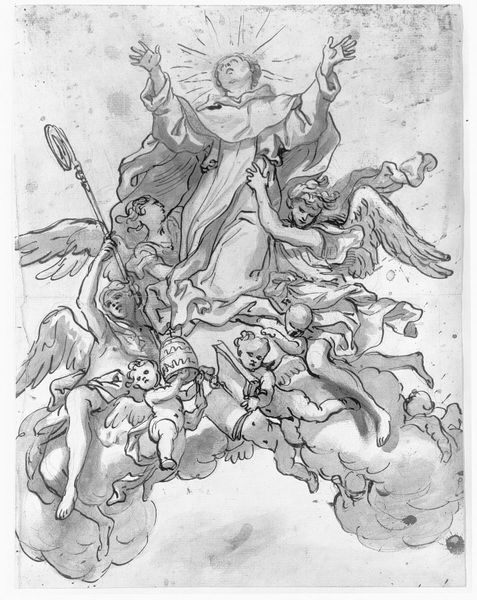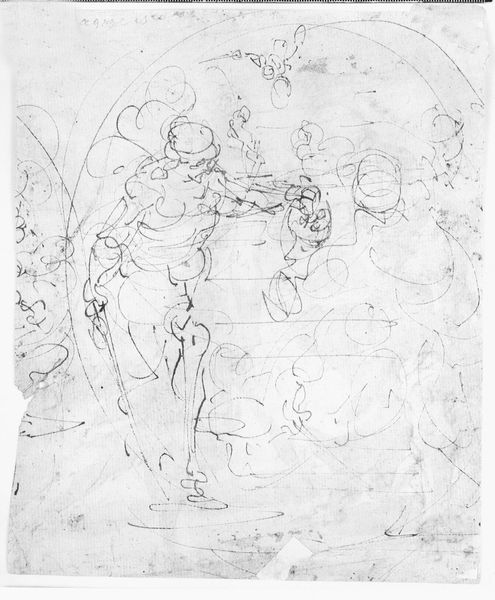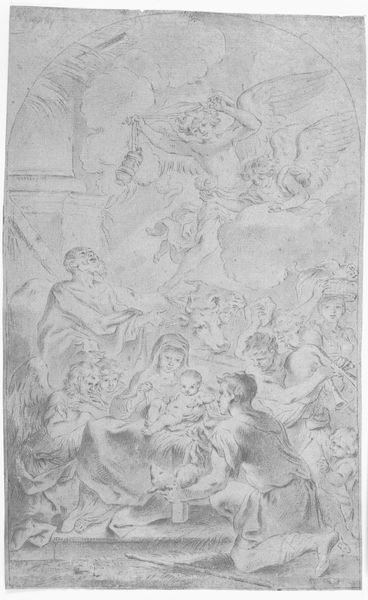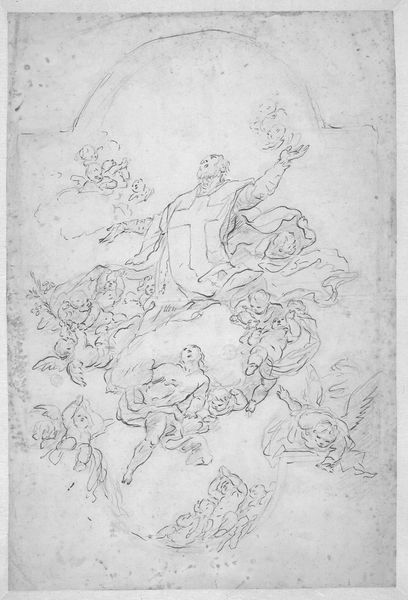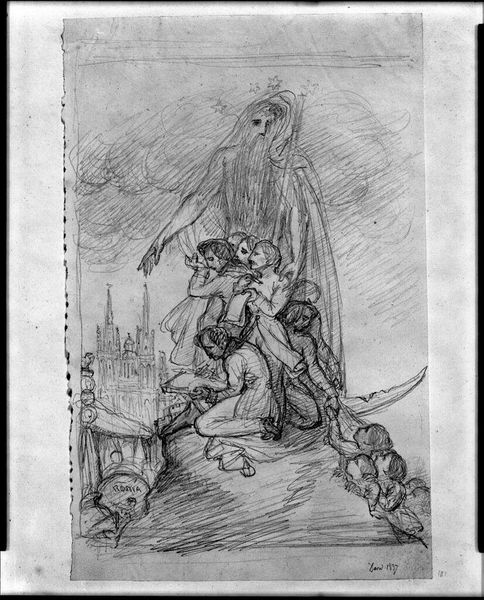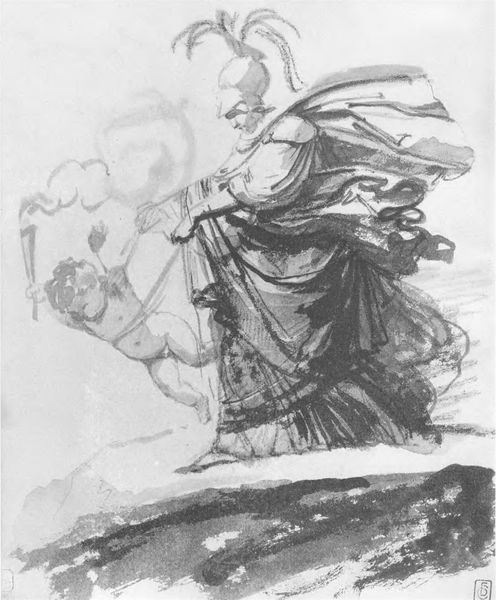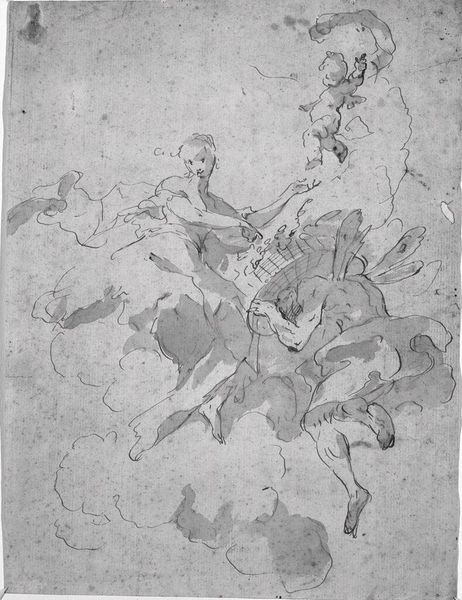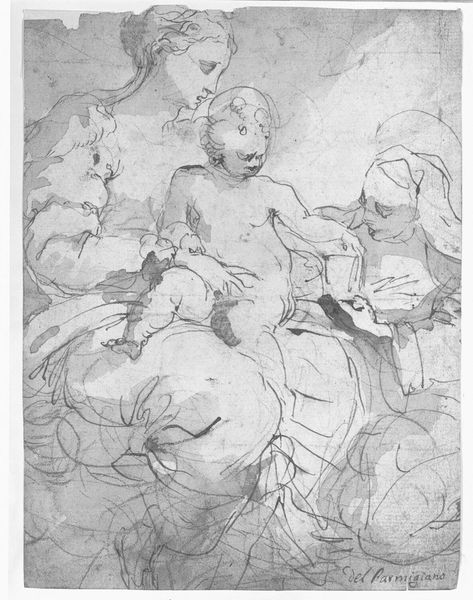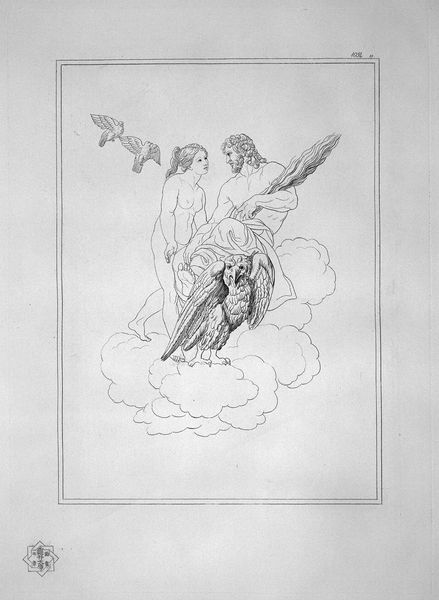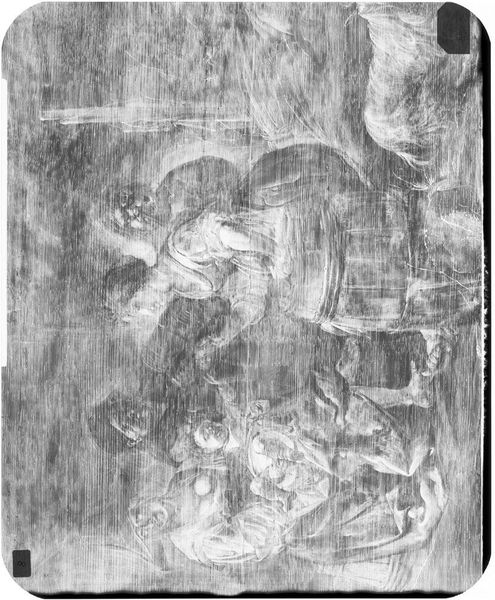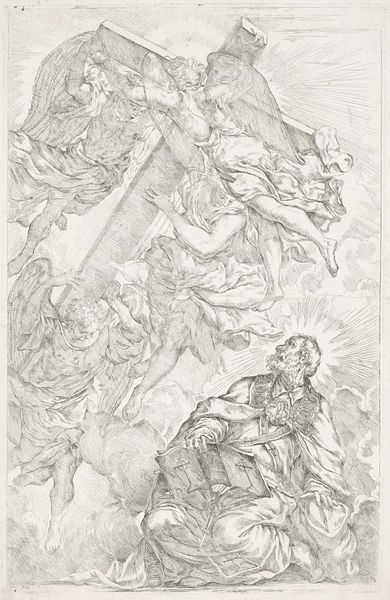
drawing
#
drawing
#
baroque
#
figuration
#
history-painting
Dimensions: 288 mm (height) x 206 mm (width) (bladmaal)
Editor: We're looking at "The Three Marys at the Tomb of Christ," a drawing by Domenico Piola, dating from between 1627 and 1703, currently residing at the SMK in Copenhagen. I am struck by how ethereal the whole composition feels. How do you approach interpreting this work formally? Curator: Initially, the distribution of light captures my attention. Consider the stark contrast between the celestial radiance illuminating the angel and the comparatively subdued treatment of the figures below. Does this contrast suggest a hierarchical arrangement, placing the divine above the earthly? Editor: It seems to separate the figures into different planes. So, it’s both compositional and symbolic. Is there anything in particular that stands out to you about Piola's use of line? Curator: Certainly. Observe the fluidity and dynamism evident in the rendering of the drapery. The artist employs a series of gestural strokes to convey a sense of movement and texture, thereby animating the fabric. Note, also, the architectural elements in the background. How do those straight lines interplay with the movement of the robes? Editor: I hadn't thought of the composition that way, the line and volume creates opposing focal points. This makes the figures really grounded despite the heavenly beams shining on the left. Curator: Precisely. The juxtaposition of rigid architectural elements and flowing drapery imbues the work with a compelling visual tension. What did you discover as you were initially drawn to this work? Editor: Seeing it this way reveals such dynamic intentionality and draws attention to often missed details like the line work in the angel or contrast in medium from the ethereal sky to the tomb. Thank you. Curator: The experience of shared observations transforms and elevates understanding. A worthwhile analysis.
Comments
No comments
Be the first to comment and join the conversation on the ultimate creative platform.
